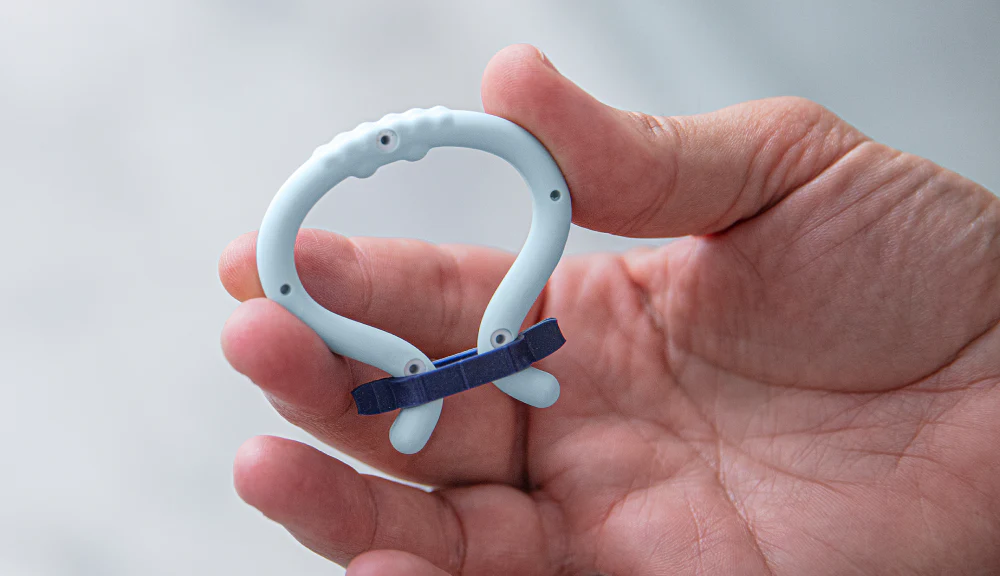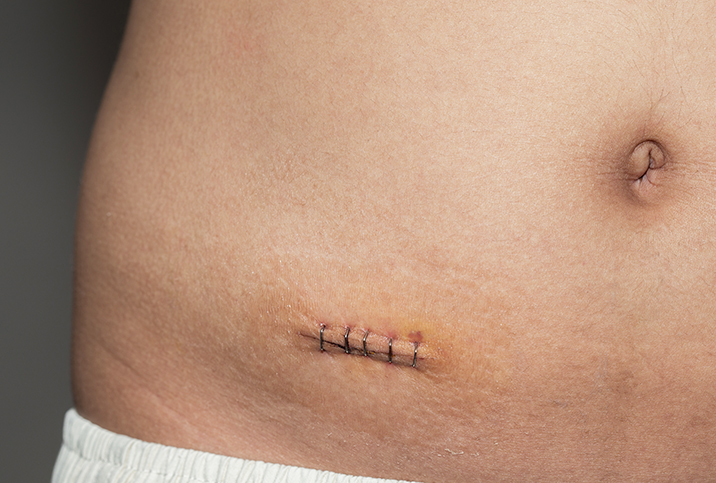Treatments for Endometriosis Include Drugs, Surgery, Hormone Therapy

Endometriosis is a chronic, often painful condition that affects roughly 10 percent of women and girls of reproductive age globally. It is most common in women in their 30s and 40s.
With endometriosis, tissue similar to the uterine lining (endometrium) grows where it shouldn't, such as on the ovaries or fallopian tubes. It can cause pelvic pain, heavy periods, pain during sex and even infertility. It can also be asymptomatic in up to 20 percent of patients.
Talk to your doctor if you are experiencing one or more endometriosis symptoms, such as chronic pain in the lower back or pelvis, intestinal discomfort, pain during or after sex, spotting between periods, pain with urination during periods and others.
Getting an endometriosis diagnosis can take a long time—an average of 8.6 years, according to one study—because the disease's symptoms can also indicate many other conditions, according to Kecia Gaither, M.D., board-certified in OB-GYN and maternal-fetal medicine and director of perinatal services/maternal-fetal medicine at NYC Health + Hospitals/Lincoln in the Bronx in New York City.
Once endometriosis is diagnosed, your doctor can recommend an individualized treatment plan—there's no cure—to help you manage your symptoms and live a full life.
Drug treatments
Most doctors recommend starting with noninvasive treatments for endometriosis before moving on to surgical procedures if needed, according to Mayo Clinic.
Pain medications
Pain is a prevalent symptom of endometriosis. Some women experience it only before or during their periods, but some report chronic pain. Regardless, pain management is key to living a full, healthy life with endometriosis.
Many doctors recommend nonsteroidal anti-inflammatory drugs (NSAIDs) for pain, according to Gaither. These might include ibuprofen or naproxen sodium.
Hormone therapy
Endometriosis growths respond to hormone fluctuations during the menstrual cycle just like the uterine lining does: by thickening, breaking down and bleeding.
Some endometriosis treatments work by controlling or even stopping the production of these hormones. Hormone therapy can help slow down endometrial tissue growth or prevent complications from existing endometrial tissue, according to the National Institutes of Health (NIH).
Some of the hormone therapies used to treat endometriosis, according to Gaither and the NIH, include the following:
- Birth control. If you have heavy, painful periods, your doctor might recommend hormonal birth control pills, patches, rings and intrauterine devices (IUDs). These contraceptives help control your hormone levels to lighten or even stop your periods. This eliminates severe period pain for some patients.
- Gonadotropin-releasing hormone (GnRH) medicines. These drugs restrict your body's hormone production to stop endometrial growth. However, these medicines induce a menopausal-like state, Gaither explained. The good news is you can stop taking the medication to regain your periods (and the ability to get pregnant).
- Danazol. Your doctor might also suggest danazol, an androgen-class drug that can help shrink out-of-place tissue. Like GnRH drugs, danazol can temporarily stop your periods and put you into artificial menopause, according to Gaither.
Procedures
If you have severe pain from endometriosis or are having trouble getting pregnant with endometriosis, your doctor might suggest surgery.
Laparoscopic surgery
Laparoscopic surgery is sometimes necessary to remove endometriosis implants, Gaither said. This surgery might be recommended if you're experiencing severe pain or trouble getting pregnant.
Laparoscopic surgeries are performed in hospitals or outpatient clinics. You are put under general anesthesia and rendered unconscious for the procedure.
During laparoscopic surgery, your surgeon makes a small cut near your belly button. A narrow tube with a camera attached (called a laparoscope) is inserted so your doctor can see inside your pelvic cavity. Then the surgeon inserts an instrument—often a laser—to remove bits of endometrial tissue.
Hysterectomy
A hysterectomy is the surgical removal of the uterus. At one time, hysterectomy with oophorectomy (removal of the ovaries) was considered the most effective way to treat endometriosis. This major surgery is now more often a last resort for severe endometriosis.
Undergoing surgery to have your uterus and ovaries removed is a big deal. Removal of the ovaries triggers surgical menopause, which typically results in a cessation of symptoms, Gaither said. However, a hysterectomy also eliminates any possibility of a future pregnancy.
In younger patients, the risk of future cardiac problems or bone loss means hormone replacement will be necessary. Knowing this, leaving at least one ovary in place is recommended.
A hysterectomy or hysterectomy with oophorectomy can be performed under total or regional anesthesia. It can also be completed laparoscopically, abdominally or, sometimes, vaginally. Your pre- and post-procedure experiences will vary depending on the type of anesthesia and surgery you and your surgeon choose.
For some women, a hysterectomy can improve their symptoms and boost their quality of life. For others, the pain may return. It's essential to weigh your treatment options and consider the pros and cons of each. Finding a doctor and surgeon you feel comfortable with is crucial, especially when considering major surgery.
The importance of seeking treatment
Endometriosis is a chronic condition. It has no cure. But those are not reasons to put off a diagnosis, because treatments are available to help manage your symptoms and keep the condition from crippling your quality of life.
"Left untreated, endometriosis can result in infertility, intra-abdominal adhesions, scarring, chocolate cysts [blood-filled cysts] and chronic pelvic pain," Gaither said.
If you're experiencing pelvic pain, painful intercourse, unexplained bowel pain or heavy, painful periods, talk to a doctor. A proper diagnosis can help guide you and your doctor toward effective treatments.
If you're looking for a new doctor—you've moved, your longtime physician retired, you just need a change—Giddy telehealth takes the difficulty out of the search. The easy-to-use online service provides access to hundreds of healthcare professionals who have expertise across the full scope of medical care. Many of them specialize in women's health and offer same-day video visits.


















